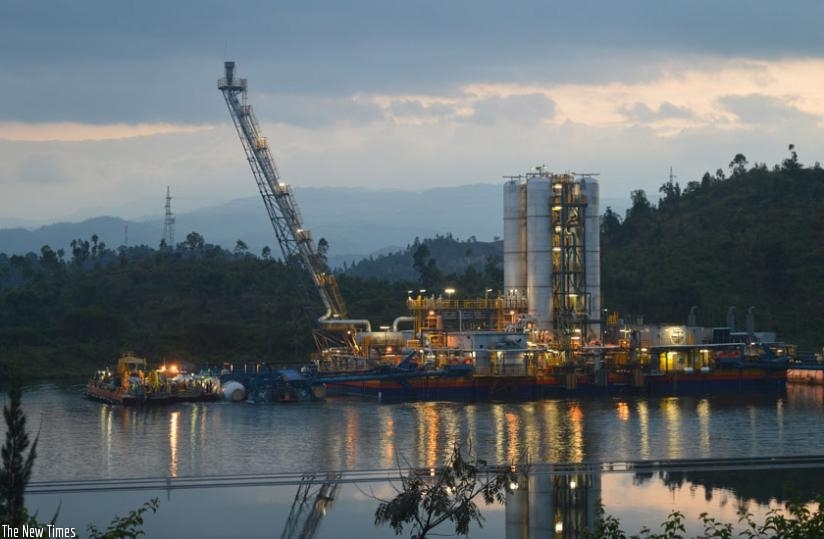THE Government has applauded news of the successful testing of the first gas samples on the Kivu-Watt Methane Gas plant, a project on Lake Kivu expected to add some 25 megawats to the national electricity grid.


THE Government has applauded news of the successful testing of the first gas samples on the Kivu-Watt Methane Gas plant, a project on Lake Kivu expected to add some 25 megawats to the national electricity grid.
"This is a welcome development. It will add value to our energy mix,” said energy Minister James Musoni, in a brief text message to Saturday Times.
Testing of the gas was done Thursday night after the successful re-installation of the first of four pairs of separators and subsequent extraction of the first samples, according to Jarmo Gummerus, the country director of ContourGlobal.
Gummerus said in a phone interview yesterday that the second pair of separators will be installed by end of the month while full gas production and subsequent commissioning of the plant will take place before the end of October.
American energy firm ContourGlobal was given a 25-year concession to produce 100 megawatts from Lake Kivu, the world’s only methane rich water body, and the successful completion of the first phase will be received as a major boost to the investor.
The multi-million dollar project is only in its first phase which was used as a pilot study for engineers to gain experience since nothing of its kind had ever been done before.
"We had no luxury to copy and paste because everything here was being done for the first time, it’s a learning phase,” Gummerus said in a previous interview.
As a result, several deadlines in the past were never met, starting with one in 2012 as complications kept emerging.
It has taken engineers over three million man-hours to witness the first gas flare since works begun seven years ago, and they will now have the luxury of copying and pasting on the next phases of the project.
Gummerus believes works on the second, third and final phases of the venture will be accomplished much faster because of experience and lessons obtained from the first phase, which he described in an earlier interview as a ‘lake-breaking.’
Earlier this month, The New Times was granted access to the plant located on Lake Kivu in Karongi District and found engineers in a head scratching mood as they tried to fix last-minute technical malfunctions that had cropped up involving the ‘separators’.
The separators, long and wide metallic pipe drums weighing several hundred tonnes, separate gas from water before it’s processed into electricity.
But after sinking the first pair of separators into the lake, two months ago, it emerged that they were not functioning as expected and had to be reinstalled, a process that required flying in expert divers from South Africa and engineers from Germany.
The past few weeks have been spent troubleshooting; and the successful gas flaring exercise Thursday night means that the problems have finally been fixed and that the plant is nearly ready for fulltime production – a relief to both the investor and government.
"We should expect to have electricity from the plant to the national grid in mid-October,” Gummerus said.
When that happens, it will be an important milestone in Rwanda’s quest to conquer its energy inadequacy as pressure continues to mount from an ever-growing manufacturing base.
Powering Rwanda
Rwanda is currently being powered by an installed energy capacity of 161.2 megawatts but the country’s target is to have 563 megawatts by 2018; the addition of 25 megawatts from KivuWatt next month will be a firm step towards that goal.
The country is also set to start importing another 30 or so megawatts from Kenya on a five-year long arrangement expected to start late this year, according to sources at the Rwanda Energy Group, the firm charged with electricity distribution.
Further on into the future, importation of another 400mw from Ethiopia will boost Rwanda’s energy capacity to adequately fuel a country whose economy is expected to attain double digit growth by 2018.


